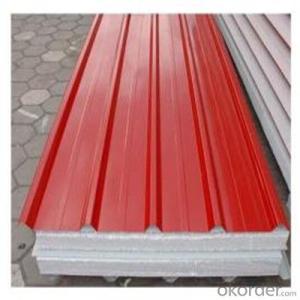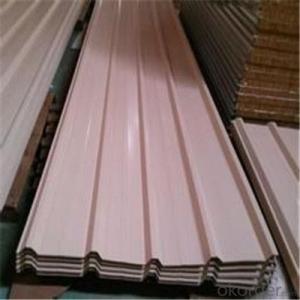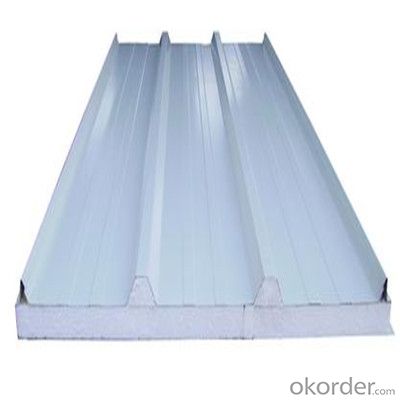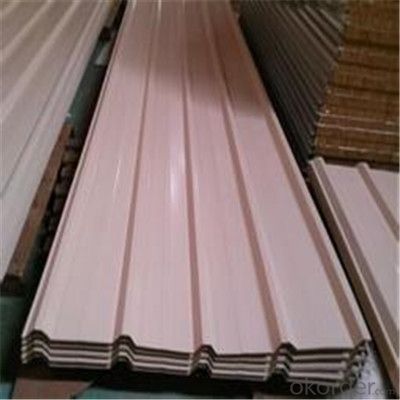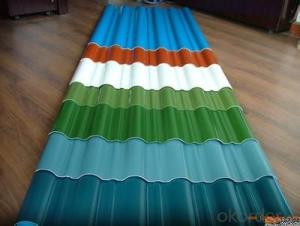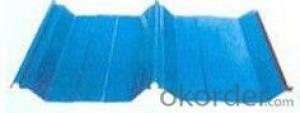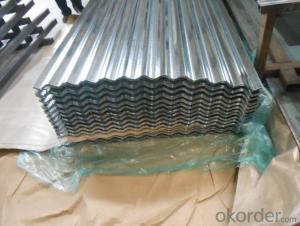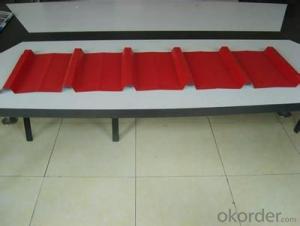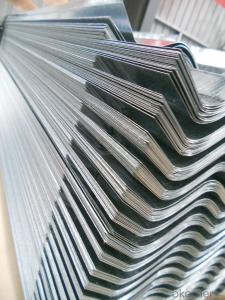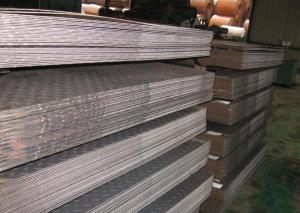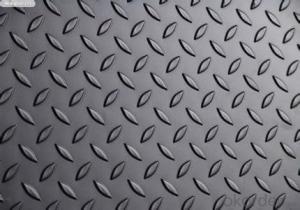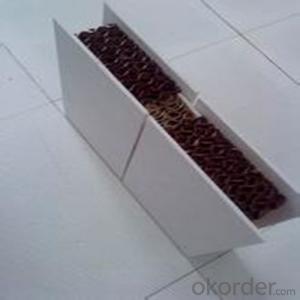Color Coated Galvanized Corrugated Iron Sheets
- Loading Port:
- Tianjin
- Payment Terms:
- TT OR LC
- Min Order Qty:
- 100 m.t.
- Supply Capability:
- 1000345 m.t./month
OKorder Service Pledge
OKorder Financial Service
You Might Also Like
Specification
Description of Corrugated Iron Sheet:
In light industries it can be used as appliances shell, civil chimney, kitchenware, etc. Farming fisheries mainly used as food storage, the seafood frozen processing equipment of meat. Business mainly used as materials of storage, packing equipments, etc
Specifications of Corrugated Iron Sheet:
Material | Steel |
Color | All RAL color |
Thickness | 0.23-1.0MM |
Width | 600mm to1200mm |
Zinc coating | 80 to 275g m2 |
Certificate | ISO 9001:2000 |
Minimum Order Quantity: | 300 Square Meter/Square Meters |
Packaging Details: | plastic film and in bundles |
Delivery Time: | within 15 days |
Supply Ability: | 30,000 Square Meter/Square Meters per day |
Features of Corrugated Iron Sheet:
1. more than 10 years experiences in steel business
2. good quality
3. competitive price
4. meet your needs via reprocessing
5. excellent service
6. short delivery time
7. long mutual beneficial business cooperation
8. certificate: ISO9001
Images of Corrugated Iron Sheet:
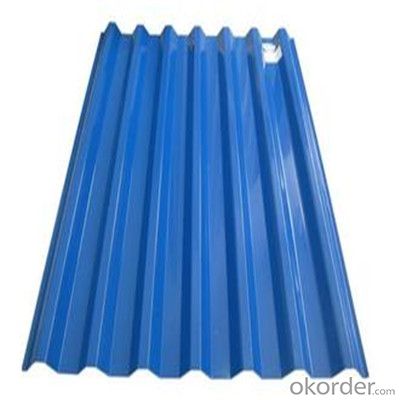
FAQ:
1. What's the Delivery port?
The main ports are Qingdao and Tianjin, we also can deliver to other ports to meet your requirements
2. How long is the lead time?
Delivery time: 45 days after order confirmed.
3. What payment term do you accept?
Payment: T/T or L/C at sight.
- Q: Can steel sheets be used for construction formwork or molds?
- Yes, steel sheets can be used for construction formwork or molds, although they may not be as commonly used as other materials such as plywood or timber. Steel sheets are durable, strong, and can provide a smooth and even surface for casting concrete. They are particularly suitable for large-scale construction projects where formwork needs to withstand high pressures and loads. Steel sheets can be custom-designed and fabricated to meet specific project requirements, offering flexibility in shape, size, and configuration. However, it is important to consider the cost, weight, and availability of steel sheets compared to other formwork materials before making a decision.
- Q: What are the different surface treatments available for steel sheets to enhance their appearance?
- There are several surface treatments available for steel sheets to enhance their appearance. Some common options include galvanizing, which involves applying a layer of zinc to protect against corrosion and provide a shiny finish; powder coating, which involves applying a dry powder to the surface and then heating it to create a durable and attractive coating; and polishing, which involves buffing the surface to create a smooth and reflective finish. Other treatments include plating, painting, and etching, each offering unique aesthetic benefits for steel sheets.
- Q: Can steel sheets be used for electrical grounding purposes?
- No, steel sheets are not suitable for electrical grounding purposes as they are not good conductors of electricity.
- Q: Can the steel sheets be cut easily?
- Yes, steel sheets can be cut easily using various cutting methods such as shearing, plasma cutting, laser cutting, or mechanical sawing depending on the thickness and type of steel.
- Q: Can steel sheets be used in earthquake-resistant construction?
- Yes, steel sheets can be used in earthquake-resistant construction. Steel is a strong and durable material that has been widely used in seismic design and construction. Steel sheets can be used as structural elements in the form of beams, columns, and bracings, providing stability and strength to the building. Steel has several properties that make it suitable for earthquake-resistant construction. Firstly, steel is flexible and ductile, which means it can deform without breaking under the stress of an earthquake. This flexibility allows steel structures to absorb and dissipate seismic energy, reducing the impact on the building and minimizing damage. Additionally, steel has a high strength-to-weight ratio, which means it can withstand large forces while being relatively lightweight. This is beneficial in earthquake-resistant construction as it helps to reduce the overall weight of the structure, which in turn reduces the seismic forces acting on the building. Moreover, steel is a homogeneous material, which means it has consistent properties and behavior throughout its structure. This allows for accurate and predictable analysis and design of steel structures, ensuring that they can withstand seismic forces. Furthermore, steel structures can be designed and constructed with specific earthquake-resistant features, such as base isolation or energy dissipation devices, to further enhance their seismic performance. These features help to absorb and dissipate seismic energy, reducing the impact on the structure and improving its resistance to earthquakes. In conclusion, steel sheets can indeed be used in earthquake-resistant construction. Their flexibility, strength, and ability to dissipate seismic energy make them a suitable material for withstanding earthquake forces and ensuring the safety and stability of buildings in seismic areas.
- Q: How do steel sheets compare to aluminum sheets in terms of strength?
- In general, steel sheets exhibit greater strength than aluminum sheets. Steel possesses a reputation for its remarkable tensile strength, enabling it to endure substantial forces without distorting or fracturing. Conversely, aluminum sheets demonstrate lower tensile strength and are inclined to bend or distort when subjected to heavy loads. Nevertheless, it is important to acknowledge that aluminum sheets can still possess sufficient strength for numerous applications, particularly when taking into account their lower density when compared to steel. Moreover, aluminum sheets possess the advantage of being lighter in weight, resistant to corrosion, and exhibiting superior thermal conductivity in relation to steel sheets. Consequently, the decision between steel and aluminum sheets hinges upon the specific requirements of the project, taking into consideration factors such as strength, weight, resistance to corrosion, and thermal properties.
- Q: What is the difference between Q235A steel and Q235B steel?
- Secondly, in the tensile and impact experiments, the material is Q235A steel, no impact test, the material is Q235B steel to do the normal temperature impact test, V notch. Relatively speaking, the mechanical properties of materials Q235B steel is much better than the material of Q235A steel.
- Q: Can steel sheets be used for electrical conductors or grounding?
- No, steel sheets cannot be used for electrical conductors or grounding as steel is not a good conductor of electricity.
- Q: How are steel sheets produced?
- Steel sheets are produced through a process called steel rolling, where large steel slabs are heated and passed through a series of rollers to reduce their thickness and achieve the desired shape and size.
- Q: What is the difference between a hot rolled and cold rolled stainless steel sheet?
- The main difference between hot rolled and cold rolled stainless steel sheets lies in the manufacturing process and the resulting properties of the material. Hot rolled stainless steel sheets are produced by heating the stainless steel to a high temperature and then rolling it through a series of rollers to achieve the desired thickness. This process is typically used for larger sheets and results in a rougher surface finish. Hot rolled sheets are also known for their inherent strength and malleability, making them suitable for a wide range of applications that require structural integrity. On the other hand, cold rolled stainless steel sheets are produced by cooling the stainless steel to a lower temperature and then passing it through rollers at room temperature. This process results in a smoother and more refined surface finish compared to hot rolled sheets. Cold rolled sheets are often preferred for applications that require a high degree of precision, such as automotive components, appliances, and electronic devices. In terms of mechanical properties, hot rolled stainless steel sheets tend to have a higher yield strength and lower ductility compared to cold rolled sheets. This is due to the grain structure formed during the hot rolling process, which results in a more coarse and less uniform microstructure. Cold rolled sheets, on the other hand, have a finer grain structure and higher ductility, making them more suitable for forming and bending operations. In summary, the main differences between hot rolled and cold rolled stainless steel sheets lie in the manufacturing process and resulting properties. Hot rolled sheets are characterized by a rougher surface finish, higher strength, and lower ductility, while cold rolled sheets have a smoother surface finish, higher ductility, and are often preferred for applications that require precision and forming capabilities.
Send your message to us
Color Coated Galvanized Corrugated Iron Sheets
- Loading Port:
- Tianjin
- Payment Terms:
- TT OR LC
- Min Order Qty:
- 100 m.t.
- Supply Capability:
- 1000345 m.t./month
OKorder Service Pledge
OKorder Financial Service
Similar products
Hot products
Hot Searches
Related keywords
